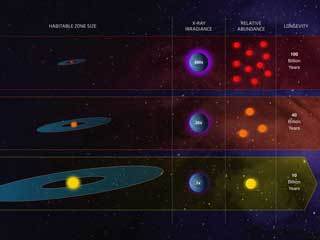

"It means we can look up at the stars at night and know that something like a quarter harbour a planet of nearly Earth's size," he added.

what fraction of the sun-like stars harbour planets of different sizes," said Geoffrey Marcy, an astronomer at the University of California, Berkeley. "For the first time we have carried out a planet census among the sun-like stars in our neighbourhood of the galaxy. They estimate that 23% of sun-like stars are circled by an Earth-like planet, 12% are orbited by more massive "super-Earths" and around 1.6% are circled by planets similar to the gas giant, Jupiter. By extrapolating from the census findings, the team worked out the odds of a star being orbited by smaller planets than those they could detect. In total, the astronomers detected 33 planets orbiting 22 stars, and the distribution of the planets showed they became more plentiful the lower their mass. The technique can only spot planets that orbit close to their stars and are substantially more massive than Earth. The planets were too distant to see directly, but their stars were observed to wobble very slightly as they passed by. The presence of running water on a planet is widely regarded as a prerequisite for the emergence of life and underpins searches for extraterrestrials by Nasa and other space agencies.Īstronomers used the powerful Keck telescope on the Hawaiian island of Mauna Kea to count planets as they swung around 166 of our closest sun-like stars.

Around a fifth of these distant Earths are expected to lie within their solar system's habitable or "Goldilocks zone", where the distance from the parent star keeps the planet's surface at just the right temperature for liquid water to form.


 0 kommentar(er)
0 kommentar(er)
